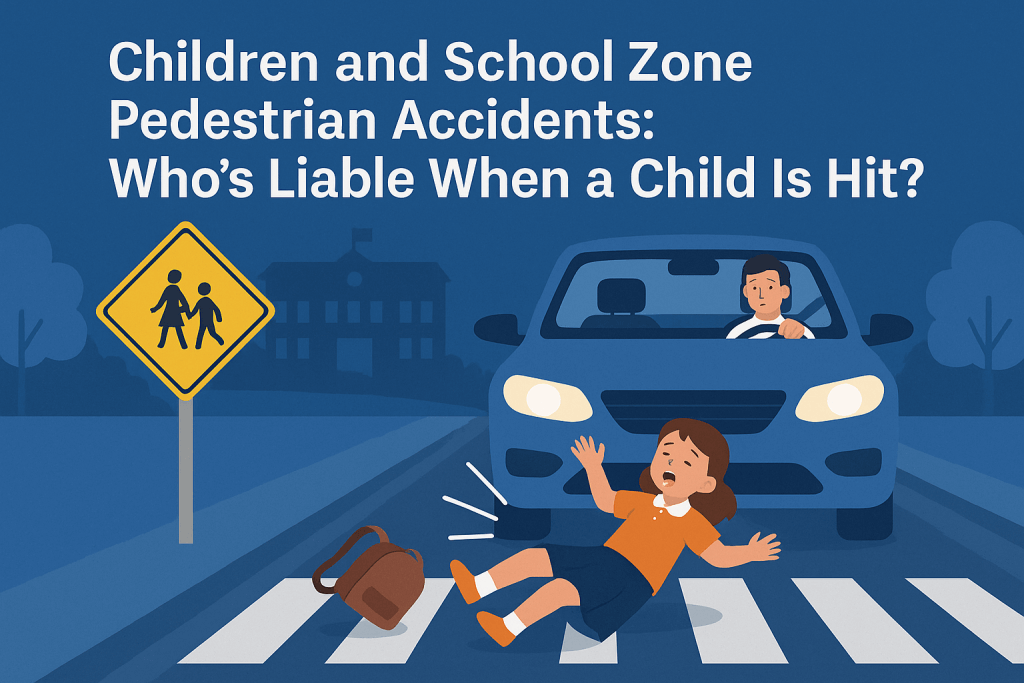School zones are designed to be safe spaces where children can walk to and from school with reduced traffic risks. However, accidents still occur with alarming frequency, and when a child is hit by a vehicle in or near a school zone, the aftermath can be devastating. Determining liability in these tragic incidents requires examining multiple legal and practical factors. A Minneapolis car accident attorney can provide crucial guidance for families dealing with such a traumatic experience, helping them understand their rights and options for seeking justice.
Understanding School Zone Safety Laws
School zones are governed by strict traffic regulations, including reduced speed limits during specific hours, designated crosswalks, the presence of crossing guards, and enhanced signage. These laws are put in place to minimize the risk to young pedestrians, who may not yet have the cognitive ability to accurately judge vehicle speeds and distances. Despite these protections, driver negligence remains a leading cause of accidents in school zones.
In Minnesota, drivers are expected to follow specific laws related to school zones, including yielding to pedestrians in crosswalks and stopping for school buses when children are loading or unloading. Failure to adhere to these laws can result in severe penalties, both civil and criminal. When a driver violates these rules and a child is injured, the driver may be held liable for negligence.
Liability in School Zone Accidents Involving Children
Liability in school zone accidents typically falls on the driver if they were speeding, distracted, or failed to yield to a child in a crosswalk. However, determining fault can become more complex depending on the circumstances. For example, suppose a child suddenly darts into the street outside of a crosswalk. In that case, liability may be shared between the driver and the child’s guardians, depending on the child’s age and ability to perceive danger.
In some cases, the school district or municipality might be liable if inadequate signage, poorly maintained crosswalks, or the absence of crossing guards contributed to the incident. Liability may also extend to third parties, such as bus companies or construction contractors, whose actions created hazardous conditions in the school zone. Each case is unique and requires a detailed investigation to establish all contributing factors.
The Role of Comparative Fault
Minnesota follows a comparative fault rule, which means that if the injured party is partially responsible for the accident, their compensation may be reduced in proportion to their percentage of fault. This principle can complicate school zone accident claims involving children. Since children cannot always be held to the same standards as adults, courts generally consider the child’s age and maturity when determining comparative fault.
For instance, a very young child who crosses a street without looking might not be found at fault, while an older child with a better understanding of traffic rules could share some responsibility. A qualified Minneapolis car accident attorney can evaluate these nuances and build a case that properly represents the child’s best interests.
The Impact of Distracted Driving
Distracted driving is a significant contributor to school zone pedestrian accidents. When drivers use their phones, adjust their GPS, or engage in other distracting activities while passing through school zones, the likelihood of hitting a child pedestrian increases dramatically.
Modern vehicles often come equipped with technology that can help determine whether a driver was distracted at the time of an accident. Cell phone records, surveillance footage, and witness testimony can all serve as evidence. These resources are vital in holding negligent drivers accountable for their actions, especially when a child’s well-being is at stake.
School Responsibility and Infrastructure Failures
Schools and municipalities may be held liable if they fail to provide a safe environment for students. This includes installing proper signage, maintaining sidewalks and crosswalks, and assigning trained crossing guards. If a child is hit in a zone where safety measures were ignored or insufficient, legal action can be taken against the responsible entities.
For example, if a school fails to respond to repeated requests from parents for improved signage or additional crossing guards, and a child is subsequently hit, there may be a strong case for institutional negligence. Public records, such as complaints and maintenance logs, can be critical in proving liability.
Parental Concerns and Legal Recourse
Parents often face an overwhelming sense of helplessness and confusion after a school zone accident involving their child. In addition to medical treatment, they must navigate the complex legal landscape of liability and compensation. Filing a personal injury claim on behalf of a minor involves strict procedural requirements and deadlines; expert testimony may be necessary to prove damages and their future impact.
Working with a car accident attorney who understands the local laws and has experience handling school zone pedestrian cases is essential. They can help ensure that all responsible parties are identified, evidence is collected correctly, and the child’s right to fair compensation is protected.
Compensation and Recovery
Victims of school zone pedestrian accidents may be entitled to compensation for medical expenses, rehabilitation, pain and suffering, emotional trauma, and loss of quality of life. If the injuries result in long-term disability, the settlement may also include the cost of future care and accommodations. Families should document all aspects of the child’s recovery, including psychological effects, which are often long-lasting.
According to the Centers for Disease Control and Prevention (CDC), pedestrian injuries are one of the leading causes of injury-related death among children. Early legal intervention can help secure financial resources for ongoing treatment and ensure accountability for negligent actions.
Conclusion
Children injured in school zone pedestrian accidents deserve justice, support, and protection. Determining liability involves a careful analysis of driver behavior, environmental conditions, and institutional responsibilities. With the help of a skilled Minneapolis car accident attorney, families can pursue legal action that holds negligent parties accountable and helps provide for a child’s recovery and future.
Cassia Rowley is the mastermind behind advertising at The Bad Pod. She blends creativity with strategy to make sure ads on our site do more than just show up—they spark interest and make connections. Cassia turns simple ad placements into engaging experiences that mesh seamlessly with our content, truly capturing the attention of our audience.


